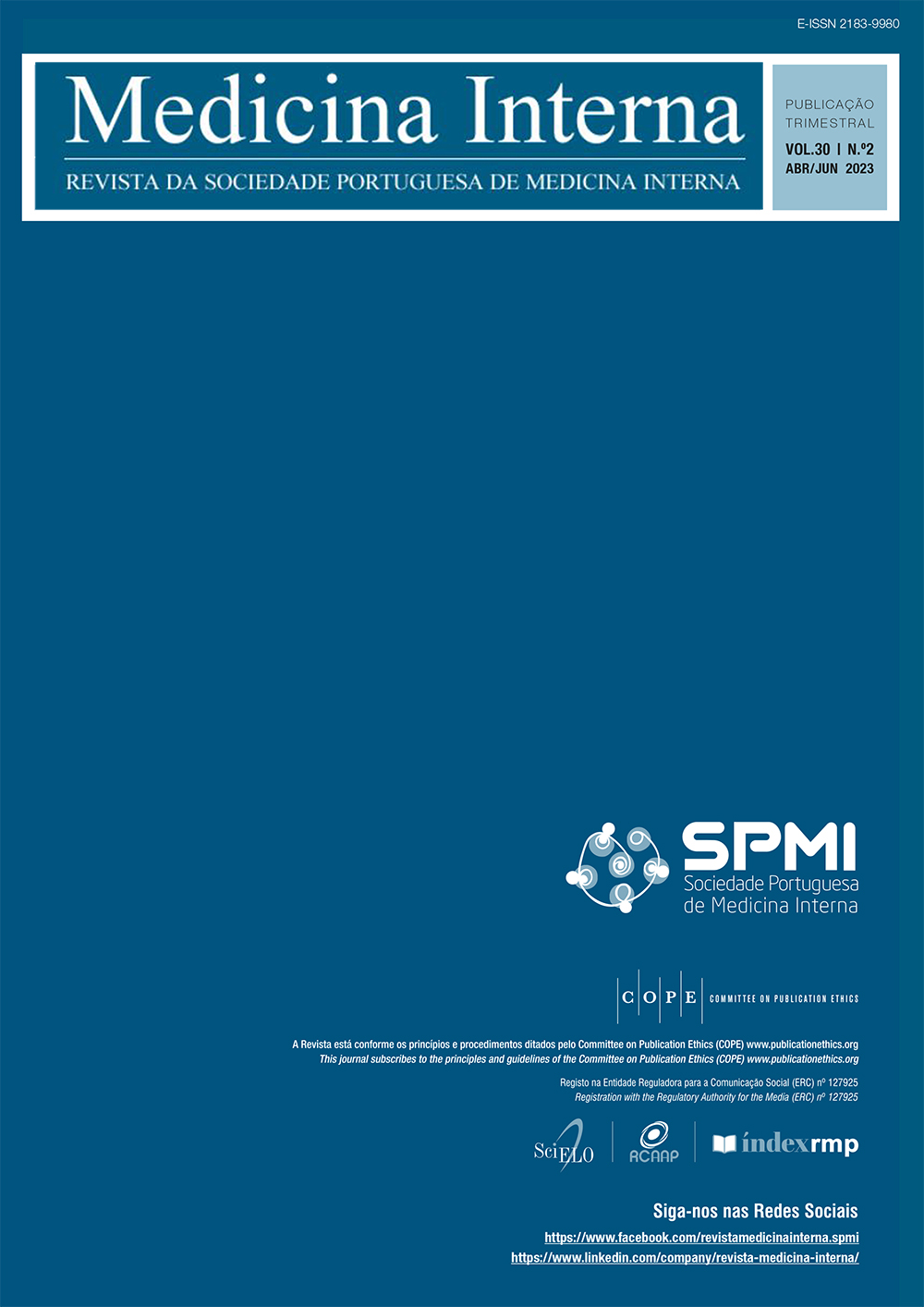Late Clearance of Chronic Hepatitis C: A Rare Case Report
DOI:
https://doi.org/10.24950/rspmi.1087Keywords:
Antibodies, Neutralizing, Hepatitis C, Hepatitis C, ChronicAbstract
Hepatitis C virus (HCV) infection is one of the leading causes of chronic liver disease worldwide. The long-term impact of HCV infection is highly variable, from minimal changes to
extensive fibrosis and cirrhosis, with or without progression
to hepatocellular carcinoma. Spontaneous viral clearance of HCV, defined by sustained undetectable serum viral load
concentrations, occurs in about 20%-25% of those infected,
usually within the first 6 to 12 months after primary infection. We present the case of a patient admitted to an internal medicine ward with a likely chronic HCV infection, without epidemiological context, but with established liver disease and cirrhosis, who developed a process of spontaneous elimination, due to acute Epstein Barr virus infection.
Downloads
References
SCowton VM, Dunlop JI, Cole SJ, Swann RE, Patel AH. The neutralizing antibody responses of individuals that spontaneously resolve hepatitis c virus infection. Viruses. 2022;14:1391. doi: 10.3390/v14071391.
Bulteel N, Partha Sarathy P, Forrest E, Stanley AJ, Innes H, Mills PR, Valerio H, Gunson RN, Aitken C, Morris J, Fox R, Barclay ST. Factors associated with spontaneous clearance of chronic hepatitis C virus infection. J Hepatol. 2016;65:266-72. doi: 10.1016/j.jhep.2016.04.030.
Sagnelli E, Sagnelli C, Pisaturo M, Coppola N. Hepatic flares in chronic hepatitis C: spontaneous exacerbation vs hepatotropic viruses superinfection. World J Gastroenterol. 2014;20:6707-15. doi: 10.3748/wjg.v20.i22.6707.
Singh N, Ma M, Montano-Loza AJ, Bhanji RA. Learning from a rare phenomenon - spontaneous clearance of chronic hepatitis C virus post-liver transplant: A case report. World J Hepatol. 2022;14:456-63. doi: 10.4254/wjh.v14.i2.456.
Cacopardo B, Nunnari G, Nigro L. Clearance of HCV RNA following acute hepatitis A superinfection. Dig Liver Dis. 2009;41:371-4. doi: 10.1016/j.dld.2007.11.015.
Aisyah DN, Shallcross L, Hully AJ, O'Brien A, Hayward A. Assessing hepatitis C spontaneous clearance and understanding associated factors-A systematic review and meta-analysis. J Viral Hepat. 2018;25:680-98. doi: 10.1111/jvh.12866.
Sato K, Inoue J, Kakazu E, Ninomiya M, Iwata T, Sano A, Tsuruoka M, Masamune A. Reactivation of hepatitis C virus with severe hepatitis flare during steroid administration for interstitial pneumonia. Clin J Gastroenterol. 2021;14:1221-6. doi: 10.1007/s12328-021-01432-4.
Lauer GM, Kim AY. Spontaneous resolution of chronic hepatitis C virus infection: are we missing something? Clin Infect Dis. 2006;42:953-4. doi: 10.1086/500944.
Silva MJ, Calinas F. Spontaneous clearance of hepatitis C virus during alcoholic hepatitis: the alcohol killed the virus? BMJ Case Rep.
;2015:bcr2015211896. doi: 10.1136/bcr-2015-211896.
Stenkvist J, Nyström J, Falconer K, Sönnerborg A, Weiland O. Occasional spontaneous clearance of chronic hepatitis C virus in HIV-infected individuals. J Hepatol. 2014;61:957-61. doi: 10.1016/j.jhep.2014.06.014.
Downloads
Published
How to Cite
Issue
Section
Categories
License
Copyright (c) 2023 Internal Medicine

This work is licensed under a Creative Commons Attribution-NonCommercial 4.0 International License.
Copyright (c) 2023 Medicina Interna






